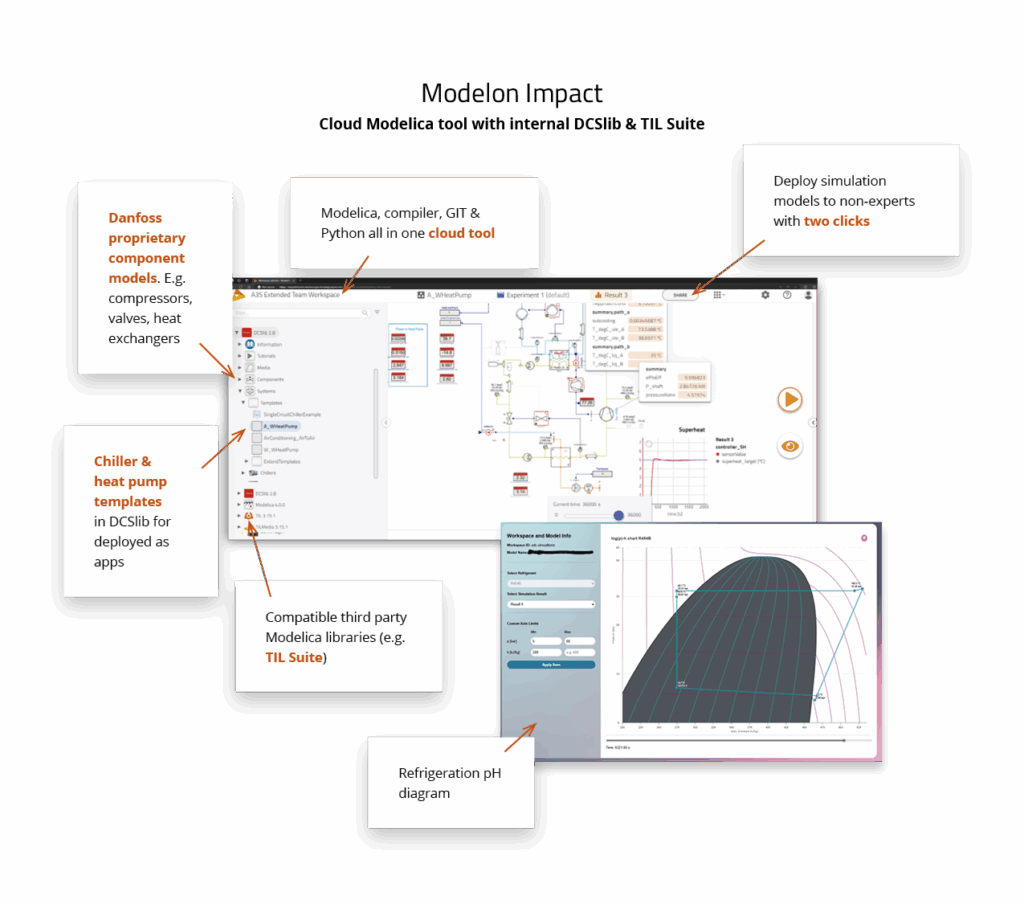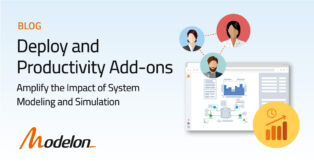Bridging the Gap Between Simulation and Sales

Introduction
Danfoss, a Danish multinational company, engineers high-quality components that reduce carbon footprints and optimize energy consumption. Within Danfoss’s Climate Solutions, Systems and Technology team, Modeling and Simulation Expert Stefan Walshe collaborates with sales engineers to gather system requirements and develop simulation models for refrigeration systems such as small residential heat pumps to larger for district energy networks or even chillers for data center cooling.
Challenge
For nearly a decade, Stefan and his colleagues used TIL Suite, provided by TLK Energy, as well as their own in-house Modelica-based libraries to more accurately model the two-phase operation of refrigerant media. While their models precisely reflected Danfoss’s systems, their complexity made them difficult for sales engineers to understand and apply. Stefan knew that empowering sales and application engineering teams to confidently use simulation results would shorten sales cycles, unlock upselling opportunities, and reduce the volume of support-intensive simulation projects.
To achieve this, they needed a solution that:
- Integrated seamlessly with TIL Suite and their in-house Modelica libraries
- Required minimal installation and setup time
- Was accessible to both simulation experts and non-experts
Solution
Danfoss selected Modelon Impact as their preferred simulation platform to better connect their simulation team with sales engineers. With Modelon Impact, they seamlessly integrated TIL Suite without having to rebuild their libraries from scratch. The platform also enabled them to import TIL Suite based internal refrigeration models developed over the past decade—preserving years of work. And because Modelon Impact is cloud-based, Stefan and his team could set up their workspace in minutes instead of hours.
Using Modelon Impact’s App Mode, Stefan can share models via simple web links. App Mode allows sales engineers to interact only with selected parameters, like thermal loads or ambient temperatures, without worrying about the model’s underlying complexity. This self-service capability reduced the time Stefan’s team spent on iterations and empowered sales engineers to run their own analyses, dramatically boosting productivity.
“App Mode enables my colleagues to utilize simulation templates, while testing can be done by teams closer to the customer. When the model developer updates the model, the end user sees the changes instantly. That, to us, is really powerful.” – Stefan Walshe, Danfoss
Additionally, Modelon Impact’s Excel Add-In, a native Excel integration, proved invaluable. Since many colleagues were comfortable working in Excel, they could easily set up and run experiments and plot the results with familiar workflows, making the tool even more accessible across the organization.
Beyond the software itself, Stefan highlighted the strong partnership with Modelon’s support team. Whether requesting training or troubleshooting, Stefan had a direct line to responsive experts ready to help.
“We get excellent support from Modelon. Their people are engaged and responsive. If we send a ticket, it’s typically answered within 24 hours. They always make time to help us get up to speed—something not common with other tools.” – Stefan Walshe, Danfoss
Result
Modelon Impact has become an effective bridge between simulation experts and non-experts. Following implementation, Stefan trained eight sales engineers, who were up and running simulations within just 45 minutes—a milestone that would have been impossible with other platforms.
Today, Danfoss’s sales engineers can confidently adjust system models to demonstrate how their solutions reduce OPEX and CO2 emissions, providing customers with clear, data-backed insights. This transparency builds trust, strengthens differentiation, and enables Stefan’s team to make a bigger impact on Danfoss’s success than ever before.



